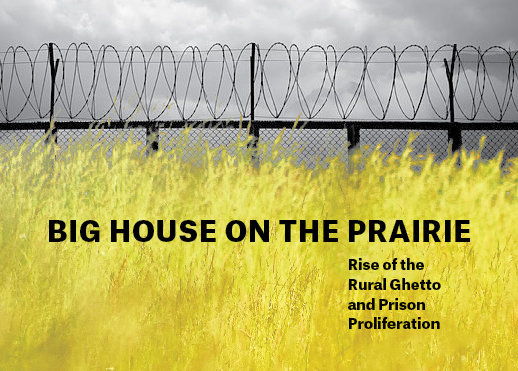ORDER Big House on the Prairie here
 This inquiry explains the causes and consequences of the prison boom from the perspective of the rural, southern towns most directly affected by prison building. Prison placement is often oversimplified as a dubious choice for rural community leaders: a way to secure jobs that may stigmatize their communities. I relocated my family to Forrest City, Arkansas (population 14,078) to uncover the challenges facing a community that pursued and secured a prison facility. Some rural leaders see attracting a prison as a way to achieve order in a world that seems to be rapidly changing in ways that are increasingly beyond their control. I learned that collective memory and a shared sense of community are also vital in differentiating the instrumental purposes of a prison (jobs) from its symbolism.
This inquiry explains the causes and consequences of the prison boom from the perspective of the rural, southern towns most directly affected by prison building. Prison placement is often oversimplified as a dubious choice for rural community leaders: a way to secure jobs that may stigmatize their communities. I relocated my family to Forrest City, Arkansas (population 14,078) to uncover the challenges facing a community that pursued and secured a prison facility. Some rural leaders see attracting a prison as a way to achieve order in a world that seems to be rapidly changing in ways that are increasingly beyond their control. I learned that collective memory and a shared sense of community are also vital in differentiating the instrumental purposes of a prison (jobs) from its symbolism.
In Forrest City, racial violence and stigma marred collective memory and shared meanings of community. Given the legacy of shame associated with prisons, the need to overcome stigma often plays the most important role in seeing a prison as a viable solution for a town’s problems. Prison demand is nuanced, multifaceted, and depends on context. By unraveling why leaders in Forrest City, Arkansas, pursued and secured placement of the Forrest City Federal Correctional Facility, we can begin to understand the social, political, and economic shifts that drove to United States—“the land of the free”—to triple prison construction in just over thirty years. I argue that rural towns want to build prisons not simply for jobs or economic wellbeing, but also to protect/improve their reputations by managing ghetto stigma.
REVIEW:
“Big House on the Prairie is a masterful, sensitive, and theoretically complex study of the politics of prison building in a southern town dealing with the ‘quadruple stigma of rurality, race, region, and poverty.’ Eason makes important contributions to four fields at once—rural and urban sociology, race, and criminal justice studies—and weaves history, ethnography, statistics, and personal narrative into a beautifully written account of how a place comes to welcome a prison as a positive development.”
(Mary Pattillo, author of Black on the Block: The Politics of Race and Class in the City)